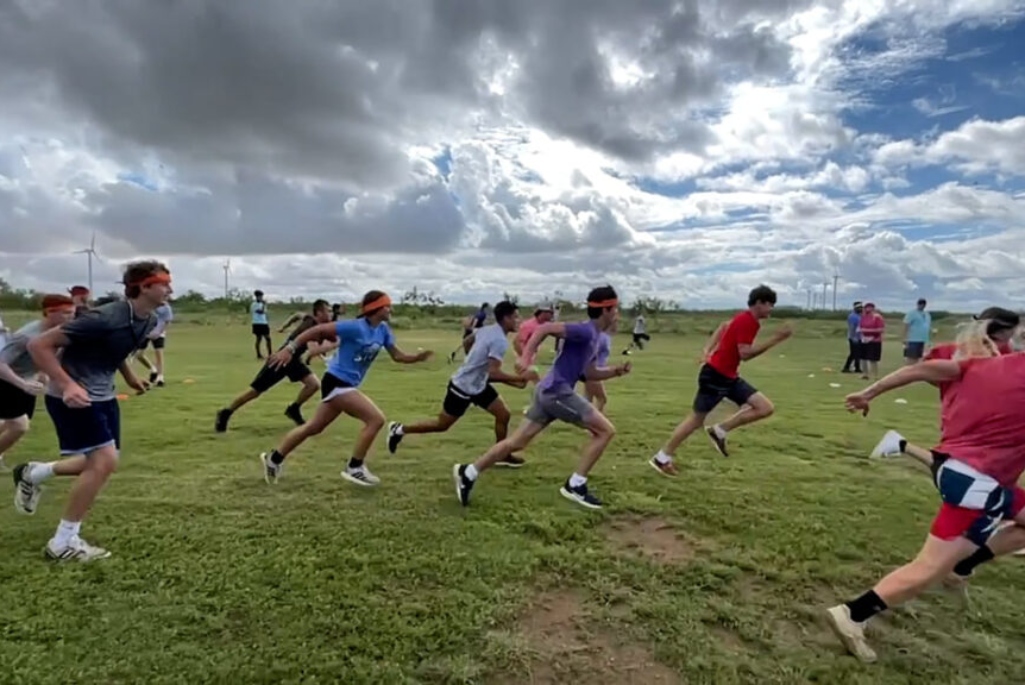Churches have never been without challenges. But two years after a pandemic and seasons marked by relational and political division, pastors and leaders report the unique challenges churches and ministries are facing. We asked N.C. Baptist ministry leaders to discuss some of these challenges, how to address them and how pastors can measure effectiveness in ministry throughout the current climate.
Below are responses from three men who serve on the staff of the Baptist State Convention of North Carolina. Terry Long (TL) is a church health and revitalization strategist. Sandy Marks (SM) and Steve Harris (SH) serve N.C. Baptists as Great Commission catalysts.
Q: As churches navigate today’s culture, particularly as we enter a “post-COVID” world, what challenges are pastors and churches facing?
TL: This has been a refining time for many churches, both in programming and commitment. Moving forward, pastors and churches now better recognize who their core group will be. But this season has left a vacancy in many cases. There’s a need to fill service positions, especially in children’s and youth ministries.
SM: One of the biggest challenges for pastors is leading the congregation to intentionally focus on the mission of the church. With fewer people coming back to church, what it decides to “restart” must be focused on mission. The challenge for the pastor is to lead people to see past what we’ve always done and find a vision for what we must do. He can’t invest valuable time and efforts of returning members on programming that’s ineffective. The number of volunteers has changed, but the enormity of the mission hasn’t.
Q: COVID has changed how effectiveness in ministry is measured. How can pastors and leaders appropriately evaluate effectiveness in ministry? What should they be looking for?
TL: At any time or in any context, ministry has to be evaluated by biblical mission and measurements. We’re called to glorify God by being disciples who make disciples. This is the church’s mission. That’s what we do. There are many strategies for how we do this, but they should always be measured by the depth of discipleship.
SM: We have to move away from participation numbers. We need to focus on life transformation as an indicator of our effectiveness. Are people’s lives being changed? Are marriages and families restored? Are we seeing a culture of “sentness” developing within our congregations? These are the questions we need to ask.
Q: COVID has also put a spotlight on pastoral health and burnout. What unique challenges are pastors facing today? What might help address those challenges?
TL: Pastors are experiencing crisis fatigue. Tate Cockrell (associate professor of counseling at Southeastern Baptist Theological Seminary) says that in a “normal” year for ministry, pastors have 5-10% of their congregation experiencing some form of crisis. During COVID, that number became 100%. Everyone in a congregation went through the stress of this crisis together.
This has caused discussion, dissention, fatigue and many other issues. Pastors have been running at this unique level of leadership for a couple years. They need a time of rest and renewal in the Lord. God, in fact, commands this, as we see in Mark 2:27-28. With these healthy rhythms, we can more clearly see a unique God-ordained ministry and mission.
SM: Peter Drucker said years ago that a local church pastor was one of the four most difficult occupations in America. COVID has taken the difficulty to another level. Leading through this pandemic revealed any and all weakness in the spiritual walk of pastors. We all have these weaknesses, and this pandemic has placed a spotlight on them. As pastors we must be spiritually and emotionally healthy disciples.
SH: We can encourage pastors to take care of themselves and their families and help them more efficiently manage their time and energy. The gospel can do the heavy lifting.
Q: For churches that have seen a decline in attendance and engagement, how can pastors and leaders encourage members to again be involved in church life, including volunteer roles?
TL: This is a great time for the church to return to two things. First, finding the unique needs of its community and meeting those needs. For a church that sees a declining workforce, start small and be focused. Be willing to take non-essential activities off your calendar. Second, the church can return to its calling of measuring everything it is doing by the disciples who are being produced.
SM: This is a difficult issue many of our pastors and churches are facing. I believe the only way forward is for the pastor to be strategic and only add back programming that relates directly to accomplishing the mission and double down on developing leaders. God has always worked through the remnant.
SH: Don’t try to guilt people into service but communicate grace motivations for ministry. You can model gratefulness for God’s past grace, love for His present grace and hope for the future grace of God.
Q: Is there anything else you’d like to share?
SH: Anne Graham Lotz once said, “You think the world is falling apart, but I believe it is falling into place, and God is moving His chess pieces around preparing us for the second coming of Christ.” These can really be the most exciting days in church history.
(EDITOR’S NOTE – Liz Tablazon writes for the Baptist State Convention of North Carolina’s communications team.)


